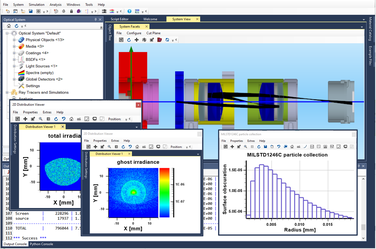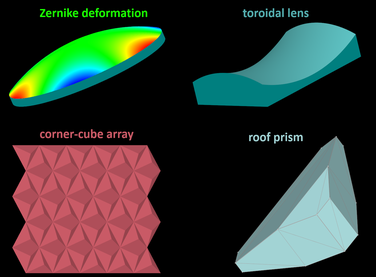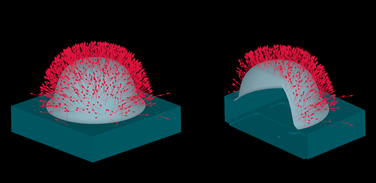
RayJack ONE® is the optical analysis and design tool by Hembach Photonik. It was developed specifically for the growing and constantly changing requirements of the high-tech industry. The software combines precision, ease of use, flexibility and interoperability. It was designed and developed by experienced optics experts for physicists and optical engineers. RayJack ONE® offers:
- State-of-the-art algorithms for precise optical simulations
- Comprehensive geometric and physical modeling capabilities
- Unparalleled analysis toolbox for comprehensive optical investigations
- Deep Python integration for maximum flexibility, efficiency, extensibility and interoperability
- Sustainability and future-proofing: software is adaptable to future technologies; a development roadmap guarantees innovation and novel approaches to solutions.
RayJack ONE®'s market is wherever creative optical solutions are required. As a predominantly non-sequential ray tracer, the main areas of application are the design of non-imaging optical systems (especially illumination and sensor optics), the modeling of light scattering, and the analysis of complex optical systems - the latter primarily for space applications.

First steps in RayJack ONE® (ca. 15min)
Surface scattering in RayJack ONE® (ca. 6min)
Basic radiometry and optical analysis (ca. 6min)
How to determine critical objects in RayJack ONE® (ca 12min)
Detectors in RayJack ONE® (ca 12 min)
Reverse Raytracing (ca. 8 min)
Multiple Surface Scattering (ca. 10min)
User defined detectors (ca. 8 min)
Rayjack ONE® Features in Detail
Powerful and flexible user interface
RayJack ONE® offers maximum control over simulations with:
- Python script editor (syntax highlighting, auto-completion)
- High-quality graphics output and animation
- Direct access to simulation parameters and modules for individual analysis
Modeling Options
- Import from Zemax, CAD, Nastran
- Geometries: all typical optical surfaces, NURBs, user-defined and much more.
- Materials: transparent, absorbing, birefringent, volume scatterers
- Surface coatings and scattering, including Importance Sampling
light sources and rays
- All standard light sources, created in RayJack ONE® or as rayfiles
- Polarized, partially polarized or unpolarized
Raytracing
Analysis
- Standard detectors for irradiance and intensity, spot diagrams etc.; colorimetry, user-defined detectors; detectors can be defined before or after ray tracing. Ray filters for targeted analysis of individual processes
- Path analysis: analysis and classification of beam paths, complete reconstruction of the beam history
Tools
Special tools for optimization, tolerancing, reverse ray tracing, automatic calculation of targets for importance sampling
Libraries
Extensive mathematical and physical libraries as well as solution libraries, some implemented in source code, some as Python scripts.
Documentation
- Comprehensive manual in HTML format, with search function, index and over 500 embedded, executable examples.
- Tutorial documents and technical notes on request
RayJack ONE® History
RayJack ONE® was developed in 2012 on the basis of an existing in-house application library and has been on the market since 2020. From 2018 to 2021, the development was funded by the European Space Agency ESA.
The software has been undergoing further development since October 2024, again with ESA funding. Together with our partner Open Engineering (Belgium), an integrated software tool for STOP analysis is being developed based our software RayJack ONE® and their software OOFELIE::Multiphysics.
RayJack ONE® pricing model
RayJack ONE® is available as a permanent or annual license (1-3 years), including support and updates. Access is via a network-compatible hardware key (dongle).
Contact Us
Please contact us using the form below or by sending an email directly to software@hembach-photonik.de.
We would be happy to provide you with a time-limited test version of RayJack ONE®, send you the current price list or a binding individual offer.
Contact our Representatives
For the Americas, China and Japan please contact our Representatives








